TIBIAL FRACTURE - INTRAMEDULLARY NAIL
The fracture of the tibia bone is a frequent injury in the usually young ages. It can occur either during sports - football, whether in a motor-vehicle accident.
The tibia is located immediately under the skin therefore often can protrude from the wound (open tibial fracture).
The treatment of the fracture must be made directly with immobilization of the affected limb and the patient must be transferred directly to orthopedic clinic and treated surgically. Today there modern surgical treatment methods which allow immediate mobilization of the patient and sometimes the direct full weight bearing of the affected leg.
This contributed significantly to faster return of the person in its activities with the least possible psychological attributing that cause this injury.
A CASE REPORT 1
Patient of 20 years after a road accident (passenger motorcycle) underwent closed non-displaced fracture in the diaphysis of the tibia. In preoperative radiograph seeing disorder of the mechanical axis of the lower limb and the anatomical axis of the affected tibia.
The patient underwent surgery, intramedullary nailing of tibia with titanium nail and stabilization with titanium screws to the edges of the nail (intramedullary nailing with reaming).
The young patient a few hours after surgery got up and walked with almost full weight bearing of the operated lower limb at the beginning with assistant of the crutches. In 20 days, walking was independent aids (crutches) and without any pain.
Diaphyseal fracture of the tibia (closed), with the disturbance of the mechanical axis of the lower limb and the anatomical axis of the tibia
In the operating room was planning points to perform intramedullary nailing under fluoroscopic guidance C-arm
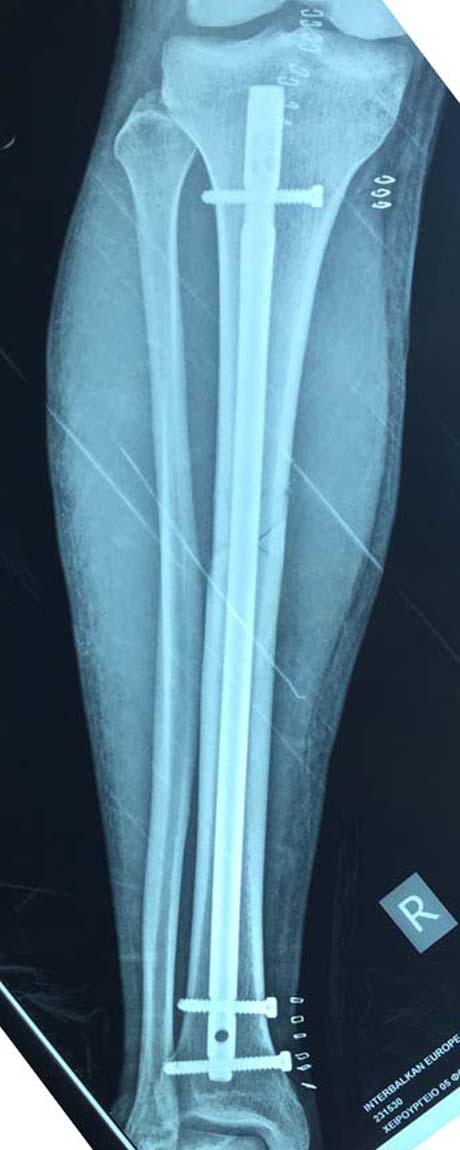
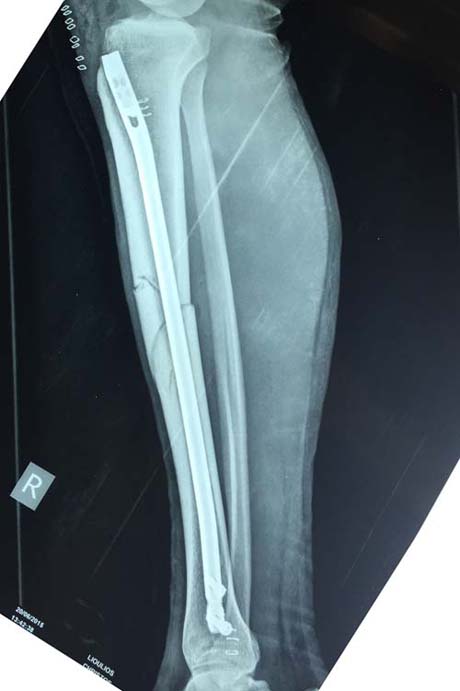
Locked, static intramedullary nailing of the tibia, X-ray postop
The upper green arrow shows the section through which it entered the intramedullary nail. The lower arrow indicates the point at which the titanium screw is applied. The circle surrounding the point of tibial fracture
Postoperative radiographic image 4 months after surgery. The union of the fracture is completely successful. The anatomical axis of the tibia and the mechanical axis of the lower extremity we have fully corrected
The advantages of addressing the tibial fracture with intramedullary nailing is that:
- no extensive surgical incisions are made on the already injured fracture site
- not detach muscles and tendons,
- not disturbed so necessary for healing of the fracture local perfusion,
- It is internal splinting of the fracture and allow the patient to step on the injured lower limb quickly and painlessly
A CASE REPORT 2
Patient 35 year old man suffered from lower diaphyseal - metaphyseal fracture and fracture in ipsilateral fibula (upper part), after a traffic accident with a motorcycle (driver). Fixes time with intramedullary titanium nailing (static locked with reaming)
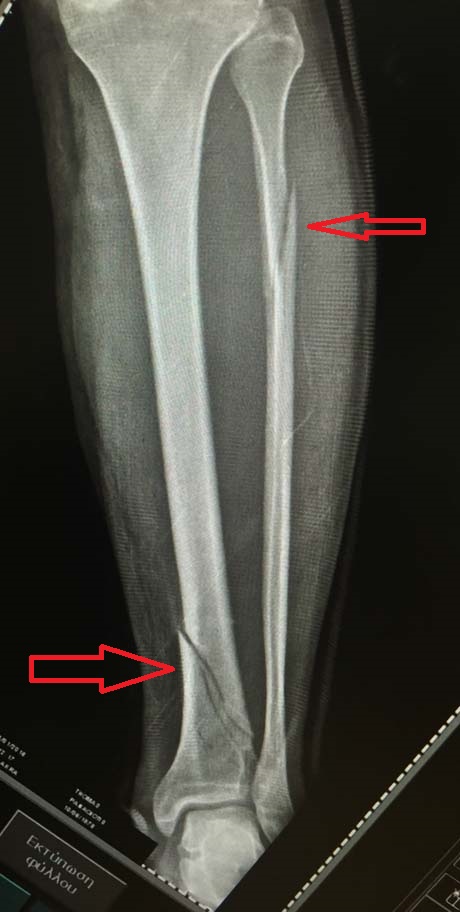
The upper arrow shows the fractured fibula while the down arrow fractured tibia
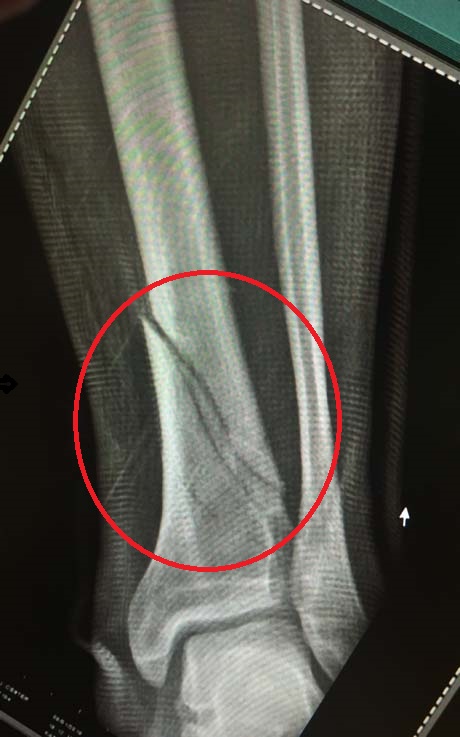
Fracture of the lower part of the diaphysis - metaphysis of the tibia. Torsion model of fracture
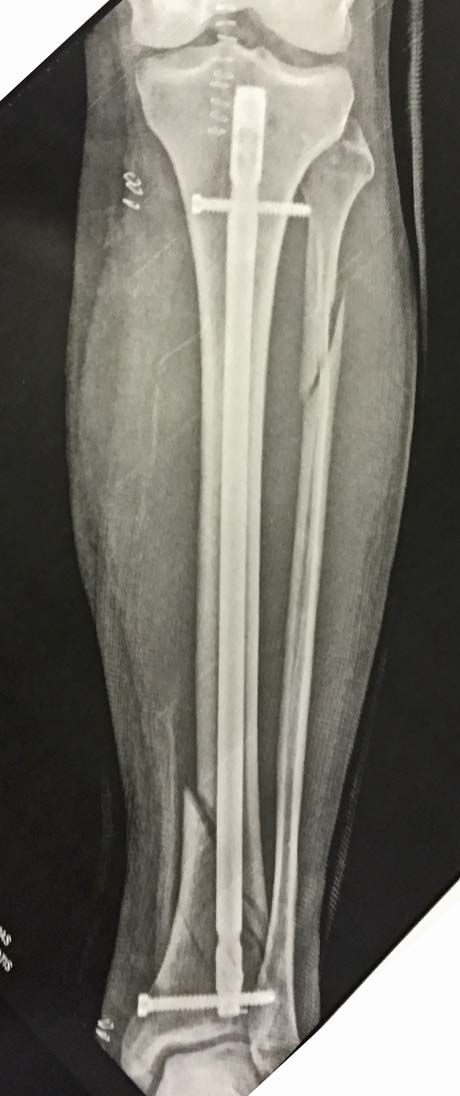
Titanium static locked intramedullary nail. One titanium screw proximal and two titanium screws distally (cross)
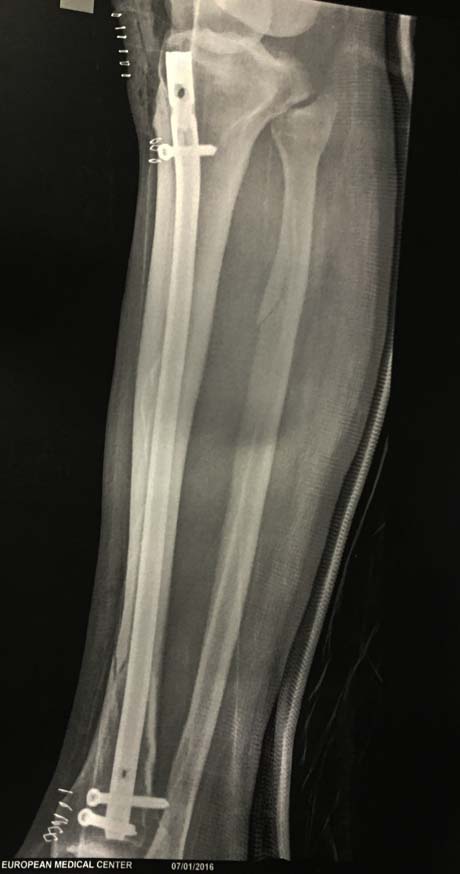
Postop tibial profile X-ray
Patient because the fracture is quite peripheral and involves the metaphysis of the tibia, the weight bearing of the limb did 20 days after surgery.


